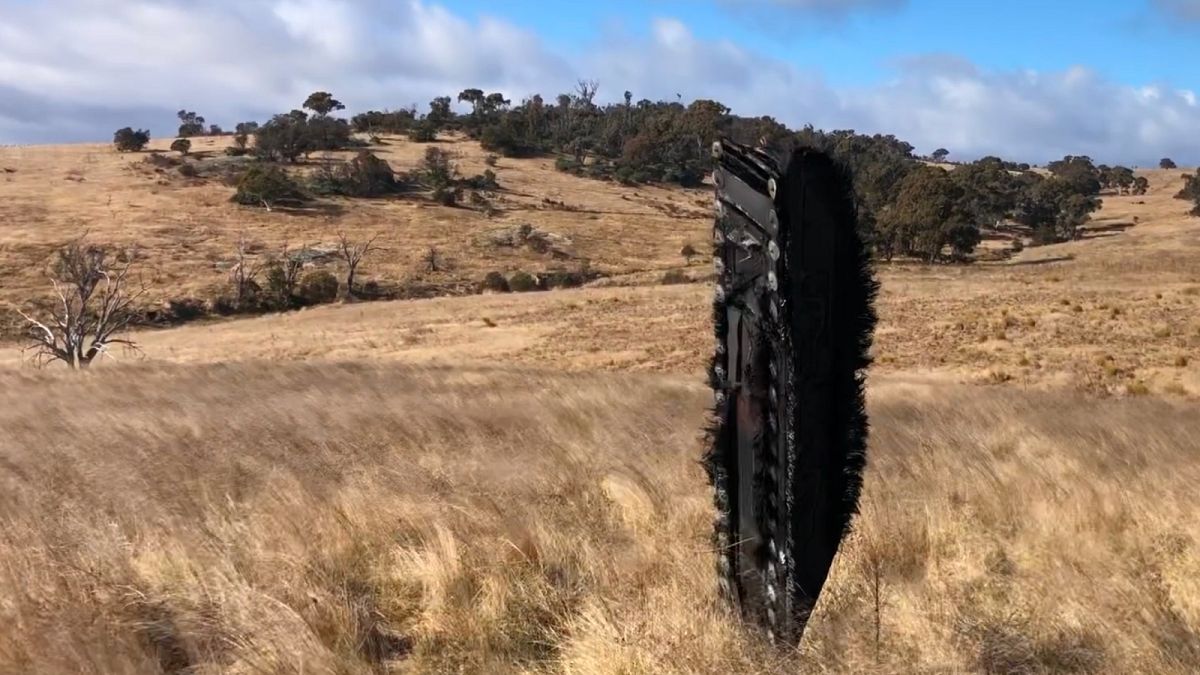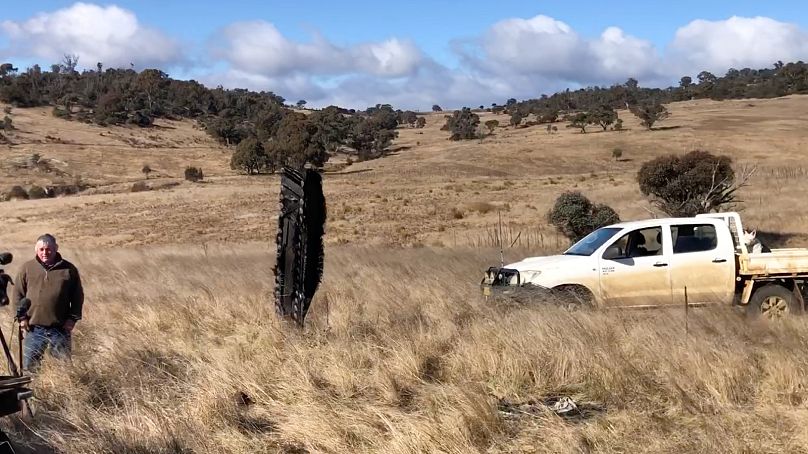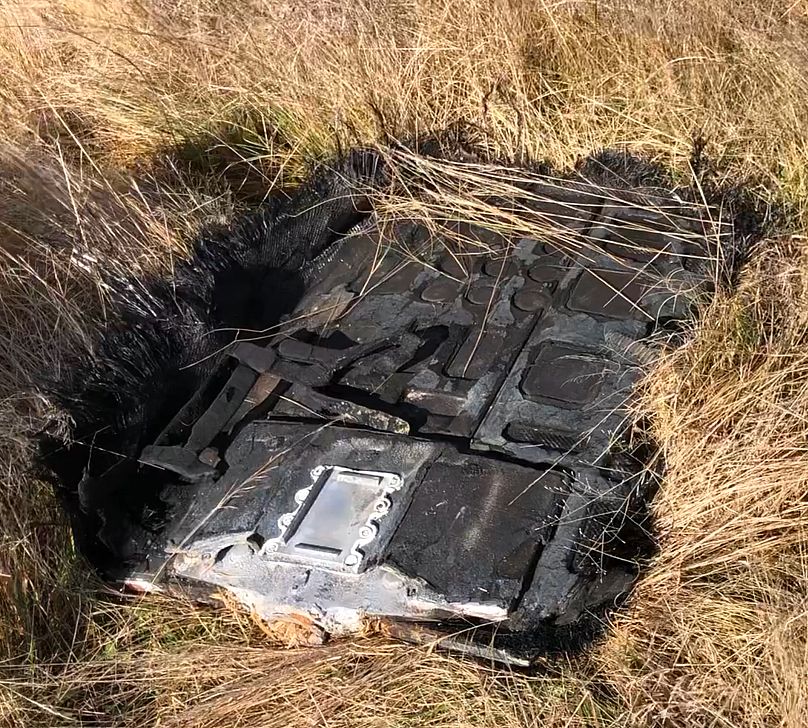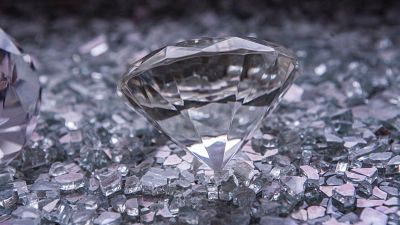Space debris falling out of the sky is becoming more; Australia's space agency has just confirmed this junk came from a SpaceX Dragon capsule.
The discovery of an "alien obelisk" in the middle of rural Australia last week has once again raised concerns about the danger of space debris falling from orbit to Earth.
The Australian Space Agency (ASA) confirmed on Wednesday the charred debris found in a sheep paddock near Dalgety, New South Wales, came from a SpaceX Dragon capsule which re-entered the Earth’s atmosphere on July 9.
The agency was notified by astrophysicist Brad Tucker from the Australian National University after Tucker received a call from two farmers last Thursday saying they believe they found space junk.
Tucker drove for two hours to Mick Miners and Jock Wallace’s farm in Dalgety to analyse the scorched object and concluded it probably came from a SpaceX spacecraft which re-entered the atmosphere last month.
The capsule had been launched approximately 20 months earlier in November 2020.
Numerous reports of the SpaceX Dragon capsule breaking apart were shared on social media, as its re-entry "was seen and heard by people from Canberra to Bendigo".
"People across the area heard a sonic boom as the SpaceX Crew-1 Trunk, which is the unpressurised bottom part of the capsule – a structure that is needed for take-off but dumped prior to re-entry – entered the atmosphere," Tucker told Euronews Next.
"People also saw the bright light and bits breaking off, which is characteristic of space junk," he added.
'Like an alien obelisk'
In a video shared on Youtube, Tucker documented the discovery, saying "you can just see it sticking it out of the ground".
At first, the sheep farmers thought the 3-metre tall debris was an "old burnt tree," but on closer inspection, Tucker noticed "clear panelling designed for insulation and heat resistance".
The debris – made of composite materials designed to withstand heat, including woven carbon fire – also showed clear signs of scorching due to re-entry.
The parts can also be roughly visually matched to pictures and parts of the trunk, according to Tucker.
"When you come up to it, it’s like this alien obelisk almost, but we think this is a part of the fin of the trunk that has now speared itself into the ground,” he added. “We think it weighs about 20-30 kg – obviously we haven’t dug it out of the ground".
"It will be very easy for SpaceX to confirm whether the debris belonged to the Dragon capsule or not because there’s a serial number on one of the panels found on Jock Wallace’s farm," Tucker said.
SpaceX responsible for the debris
Experts from the ASA visited the area on Saturday to make sure the material found isn’t a danger to anyone, and came to the conclusion on Wednesday that the debris belonged to a craft built by Elon Musk’s company.
"The agency has confirmed the debris is from a SpaceX mission and continues to engage with our counterparts in the US, as well as other parts of the commonwealth and local authorities as appropriate," the ASA said in a statement.
It is still unclear whether SpaceX will collect the debris or not, but collection of the debris is important for the Australian government to declare any liability and damages.
"The agency is now operating under the Australian Government Space Re-entry Debris Plan, which outlines roles and responsibilities for key Australian Government agencies and committees in supporting the response to space re-entry debris," the statement continued.
A spokesperson said the ASA was committed to the "long-term sustainability of outer space activities, including debris mitigation" and the agency has already highlighted this on the international stage.
Since the announcement, a third piece of space junk has also been found further west of the debris site in Moonbah.
The threat of space debris falling out of the sky
"This is a super rare event as space junk is usually intended to land in the ocean," Tucker said.
"These are the largest pieces of space junk in Australia since 1979, after the US Space station Skylab crashed over Western Australia".
Space debris falling out of the sky have "only happened a handful of times," but it is becoming more and more frequent over the years.
"There was a nuclear power Russian satellite that crashed in Canada in the '80s. And then China had a rocket booster that crashed and landed in West Africa a couple of years ago. SpaceX had part of a booster crash in the US state of Washington last year. And now this," Tucker told Euronews Next.
A large Chinese booster rocket also made an uncontrolled return to Earth on Saturday, although there was no reported damage in the western Philippine region where the debris reportedly fell, according to Filipino officials.
China was strongly criticised by the Philippine Space Agency (PhilSA), which said it did not receive any notification from its Chinese counterpart about the rocket debris.
'Uncontrolled re-entries are difficult to predict with today's knowledge'
"Unfortunately, no reasonable estimate on re-entry location can be provided prior to re-entry with today’s knowledge," Dr Holger Krag, head of the Space Safety Programme at the European Space Agency (ESA), told Euronews Next.
"Uncontrolled re-entries are difficult to predict since the time of re-entry is driven by atmospheric density, which depends on various and poorly determined factors. Since space objects are moving very fast (approximately 27,000 km/h prior to re-entry), the best achievable accuracy is only of five hours roughly, one day before re-entry," he added.
ESA predicts that the amount of orbital mass re-entering the atmosphere in a year is expected to amount to about 250 tonnes.
"About 20-40 per cent of this mass is expected to survive the aerodynamic and aerothermal stress during re-entry and impact ground," Krag explained.
Using data from the 18th Space Control squadron and European facilities under contract, ESA said it is focusing efforts on improving forecasts for “such kind of uncontrolled re-entries".
"We are also preparing technology which will bring about demisable components that we can use on space systems to limit risk on the ground," said Krag.
"Heavy space systems would not even be allowed to undergo uncontrolled re-entry, but must be designed in a way that we can de-orbit them in a controlled way over unpopulated ocean areas," he added.
"Such technology, when available, should be used systematically to avoid risk on-ground".





